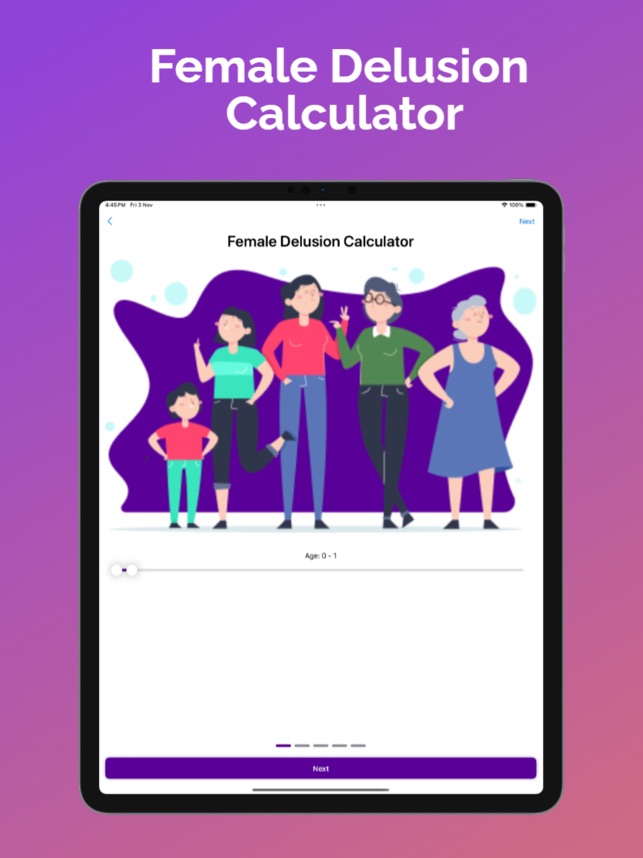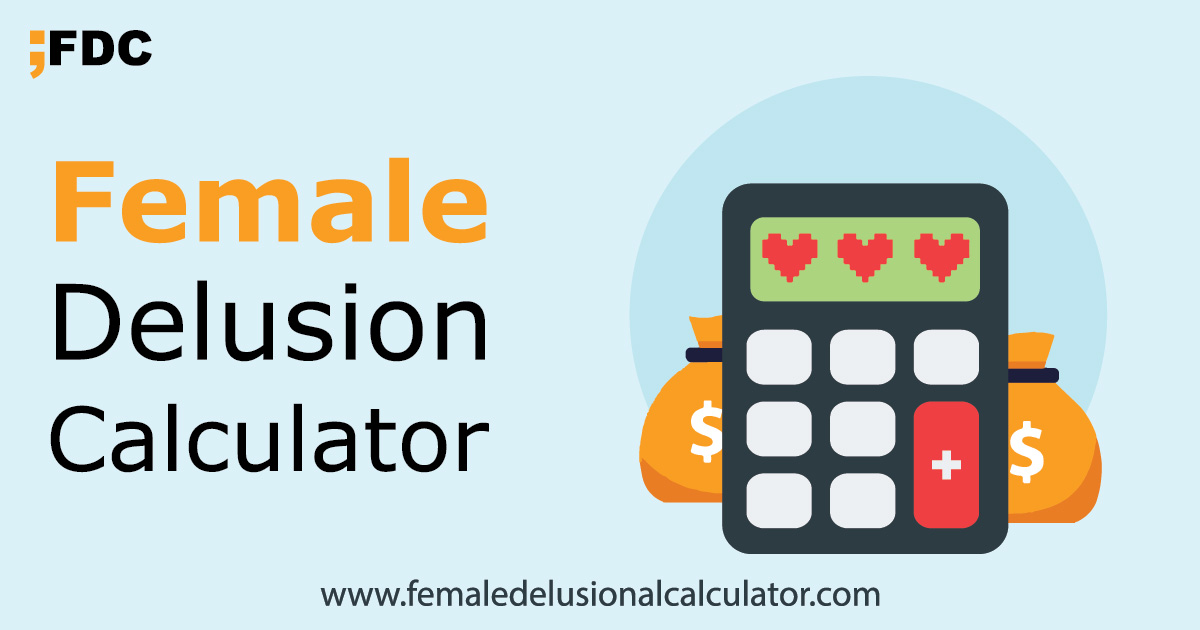Build a Woman Calculator: A Comprehensive Guide in 2024

A woman calculator, also known as a girl calculator or an ovulation calculator, is a valuable tool that helps women track their menstrual cycles, fertility windows, and ovulation days. This guide aims to provide a comprehensive understanding of how to build a woman calculator, along with insights into online tools, tips and tricks, and common mistakes to avoid.
Calculation Results
Age: 30 Years
Height: 170 CMs
Weight: 60 KGs
Income: $40000
Percentage: 50%
Try AgainStep-by-Step Guide on How to Build a Woman Calculator
Build a woman calculator requires a solid understanding of programming concepts and algorithms. Here’s a step-by-step guide to help you build your calculator:

Choosing a Programming Language
The first step in building a female delusion calculator is to choose a suitable programming language. Popular choices include Python, JavaScript, and Java, as they offer robust libraries and frameworks for developing applications. Each language has its strengths and weaknesses, so it’s essential to research and select the one that best aligns with your needs and preferences.
Creating a Data Structure
Once you’ve chosen a programming language, the next step is to create a data structure that will store the necessary information for your calculator. This data structure should be capable of holding information such as cycle length, period start date, and ovulation day. Depending on the language you’ve chosen, you may use arrays, objects, or custom classes to store this data.
Writing the Algorithm
The heart of a woman calculator lies in its algorithm, which performs the necessary calculations to predict fertile windows, ovulation days, and expected period dates. The algorithm should take into account the user’s input data, such as cycle length and period start date, and use mathematical formulas to calculate the desired outputs.
Creating the User Interface
A user-friendly interface is crucial for a successful woman calculator. The user interface allows users to input their data and view the calculated results. You can use HTML, CSS, and JavaScript to create a visually appealing and intuitive interface that enhances the user experience.
Testing and Debugging
After you build a woman calculator, it’s essential to test it thoroughly to ensure its accuracy and reliability. Test your calculator with various input values and verify that the results are correct. Debugging is an integral part of the development process, as it helps identify and fix any issues or bugs that may arise during testing.
Online Tools for Building a Woman Calculator

If you’re not comfortable with programming or prefer a more user-friendly approach, there are several online tools available that can help you build a woman calculator without writing a single line of code. These tools typically offer pre-built calculators with intuitive interfaces and customizable options.
Clue
Clue is a popular free app that helps women track their periods, ovulation, and fertility. It uses machine learning algorithms to personalize its predictions and provide women with valuable insights into their menstrual cycles.
Flo
Flo is another widely used period tracking app that includes a woman calculator. It offers a range of features, such as personalized cycle predictions, fertility tracking, and symptom tracking, making it a comprehensive solution for women’s health.
Ovia Fertility
Ovia Fertility is a fertility tracking app that incorporates a woman calculator to help users predict their fertile windows and ovulation days. It utilizes advanced algorithms to provide accurate and reliable predictions, making it an excellent choice for women trying to conceive.
Build a Woman Calculator: Tips and Tricks

Building a woman calculator can be challenging, but with the right tips and tricks, you can create a reliable and user-friendly tool. Here are some helpful tips to keep in mind:
Use Accurate Data
The accuracy of your calculator depends heavily on the data you input. Ensure that you enter your cycle length, period start date, and ovulation day precisely. Even minor inaccuracies can lead to incorrect predictions, so it’s crucial to be as precise as possible.
Consider Lifestyle Factors
Various lifestyle factors, such as stress, diet, and exercise, can impact your menstrual cycle. If you notice any changes in your cycle, adjust your calculator accordingly to ensure accurate predictions.
Use Backup Methods
While a woman calculator is an excellent tool, it’s not 100% accurate. To be on the safe side, it’s advisable to use backup methods, such as condoms or the withdrawal method, if you’re trying to avoid pregnancy.
Personalize Your Calculator
Every woman’s menstrual cycle is unique, so it’s essential to personalize your calculator to suit your individual needs. Adjust the settings and parameters to reflect your specific cycle patterns and characteristics for more accurate predictions.
Track Your Data
Keeping track of your menstrual cycle data can help you improve the accuracy of your calculator over time. Record your cycle lengths, period start dates, and ovulation days, and use this information to fine-tune your calculator’s settings.
Using Statistics to Build a Girl Calculator

Statistics can play a crucial role in building a more accurate woman calculator. By analyzing data from a large number of women, researchers can identify patterns and trends in menstrual cycles. This information can then be used to develop algorithms that can predict fertile windows and ovulation days more accurately.
Researchers can collect data from various sources, such as fertility clinics, online forums, and surveys, and use statistical methods to analyze the data. This analysis can reveal insights into factors that influence menstrual cycles, such as age, body weight, stress levels, and medical conditions.
By incorporating these statistical insights into the algorithms used in woman calculators, developers can create more precise and reliable tools. For example, a calculator that takes into account age-related changes in menstrual cycles can provide more accurate predictions for women in different age groups.
Mastering the Art of Building a Calculator
Building a woman calculator is an art that requires a combination of technical skills, creativity, and attention to detail. To become a master at building such calculators, it’s essential to continuously learn and improve your skills.

Staying Up-to-Date with Industry Trends
The field of women’s health and fertility is constantly evolving, with new research and technologies emerging regularly. Stay informed about the latest trends, algorithms, and statistical methods to ensure that your calculator remains relevant and accurate.
Seeking Feedback and User Input
User feedback is invaluable when it comes to improving your calculator. Encourage users to provide feedback on their experiences, and use this information to identify areas for improvement. Additionally, consider conducting user surveys or focus groups to gain deeper insights into user needs and preferences.
Collaborating with Experts
Collaborating with experts, such as gynecologists, fertility specialists, and statisticians, can greatly enhance the quality of your calculator. These professionals can provide valuable insights into the biological and statistical aspects of menstrual cycles, which can help you refine your algorithms and improve the accuracy of your predictions.
Continuous Learning and Improvement
Building a woman calculator is an ongoing process that requires continuous learning and improvement. Attend workshops, online courses, or conferences related to women’s health and fertility to expand your knowledge and skills. Additionally, stay up-to-date with the latest developments in programming languages, frameworks, and tools to ensure that your calculator remains technologically advanced.
The Ultimate Woman Calculator: Features and Benefits

A well-designed woman calculator can offer numerous features and benefits to its users. Here are some of the key features and benefits to consider:
Accurate Predictions
One of the primary benefits of a woman calculator is its ability to provide accurate predictions for fertile windows, ovulation days, and expected period dates. By using advanced algorithms and statistical insights, a calculator can help women plan their activities and make informed decisions about their reproductive health.
Personalized Insights
A good woman calculator should offer personalized insights based on the user’s specific data and cycle patterns. This can include information about their fertility levels, symptoms, and potential risk factors, helping women understand their bodies better and take proactive steps toward maintaining their health.
User-Friendly Interface
A user-friendly interface is essential for a successful woman calculator. The calculator should be intuitive, visually appealing, and easy to navigate, ensuring that users can input their data and access their results with minimal effort.
Data Visualization
Presenting data in a visually appealing format can greatly enhance the user experience. Consider incorporating features such as charts, graphs, and calendars to help users visualize their cycle patterns, fertile windows, and ovulation days more effectively.
Integration with Other Health Apps
Integrating your woman calculator with other health apps, such as fitness trackers or nutrition apps, can provide users with a more comprehensive view of their overall health and well-being. This can help them identify potential correlations between their menstrual cycles and other aspects of their lives, leading to better-informed decisions and a healthier lifestyle.
Build a Girl Calculator: Common Mistakes to Avoid

Building a woman calculator can be a complex process, and it’s essential to be aware of common mistakes that can undermine the accuracy and effectiveness of your calculator. Here are some common mistakes to avoid:
Inaccurate Data Input
Inaccurate data input is one of the most significant sources of error in woman calculators. Encourage users to enter their data precisely and validate the input to ensure its accuracy. Consider implementing error-checking mechanisms to detect and prevent incorrect data entry.
Ignoring Lifestyle Factors
Lifestyle factors, such as stress, diet, and exercise, can significantly impact menstrual cycles. Failing to account for these factors can lead to inaccurate predictions. Consider incorporating features that allow users to input information about their lifestyle to improve the calculator’s accuracy.
Lack of Testing and Validation
Testing and validating your calculator is crucial to ensuring its reliability. Thoroughly test your calculator with various input scenarios and validate the results against known data or expert opinions. Neglecting this step can lead to inaccurate predictions and undermine user confidence.
Overlooking User Experience
While focusing on the technical aspects of the calculator is essential, it’s equally important to prioritize the user experience. A calculator with a poorly designed interface or confusing navigation can discourage users from fully utilizing its features and benefits.
Failing to Consider Data Privacy and Security
When dealing with sensitive information like menstrual cycle data, it’s crucial to prioritize data privacy and security. Implement appropriate measures to protect user data and ensure that it is stored and transmitted securely.
Conclusion

Building a woman calculator is a challenging but rewarding endeavor. By following the step-by-step guide, utilizing online tools, applying tips and tricks, and avoiding common mistakes, you can create a reliable and user-friendly calculator that empowers women to take control of their reproductive health. Remember to stay up-to-date with industry trends, seek feedback, collaborate with experts, and continuously learn and improve your skills to become a master in the art of building a woman calculator.